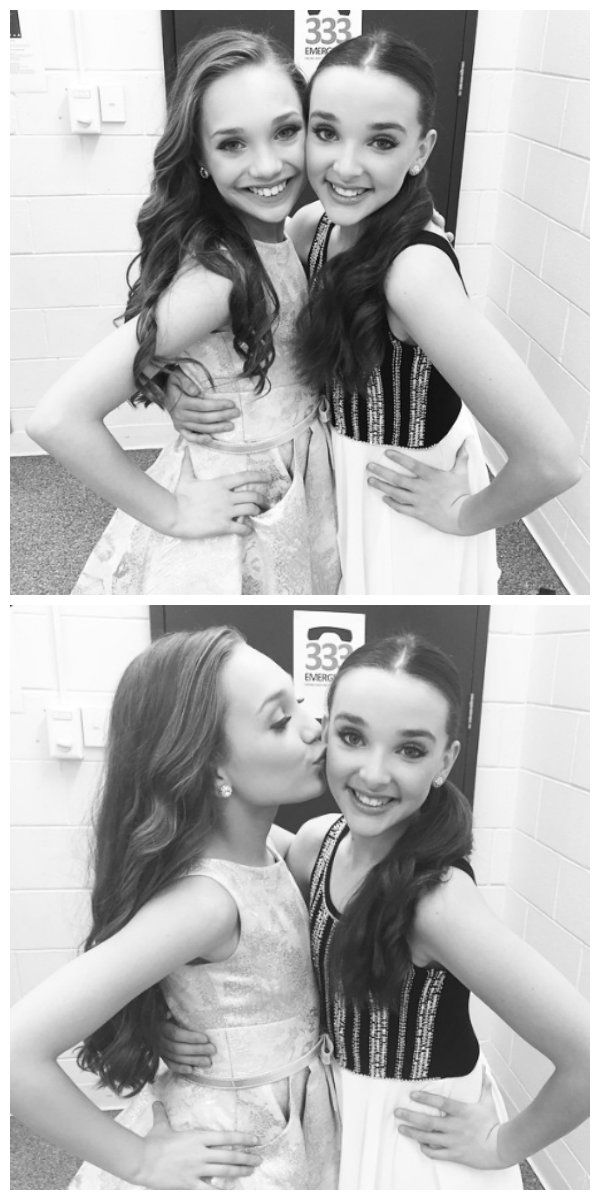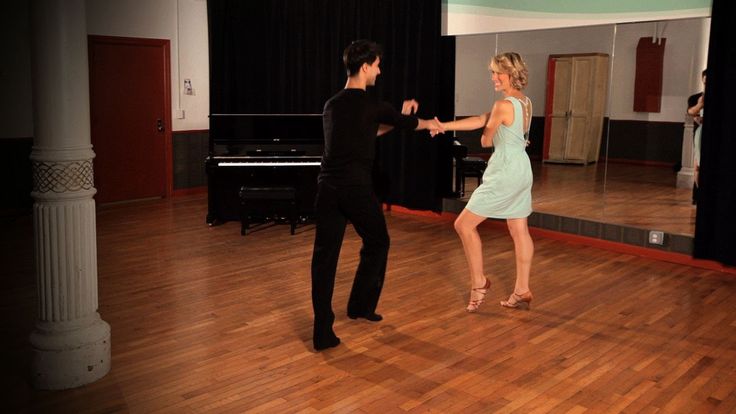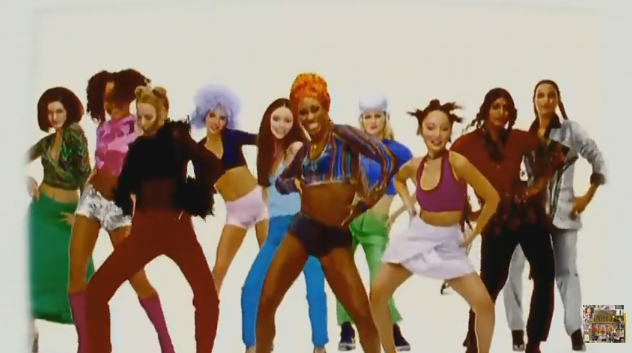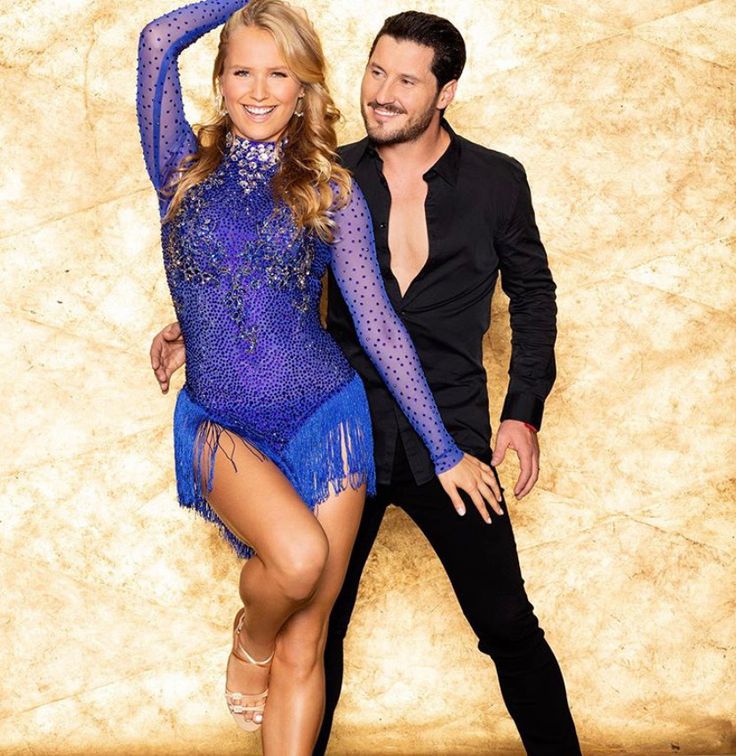How to do a double spin in dance
Super spinning tips and how to turn better in dance -
Lots of teachers (and other advanced dancers) get annoyed by non-teachers trying to teach people how to dance. I’m not going to do this, because if you want to dance well and improve it’s about getting good basic dance lessons, and practice.
But so many people struggle to spin and haven’t ever been taught. Here are the tips I was given via different teachers through the years. Tips from 13 years of ballet classes and 2.5 years of salsa where we were taught turning and spinning drills from a Guinness world record holder for spinning.
Hopefully some of these spinning tips will help you in both turning and spinning better as you dance.
1. Know the difference between a spin and a turn
A turn is stepping as you rotate, in modern jive that’s usually via a ‘return’ or travelling return. A spin should be on one foot and can be a free spin or aided by the leader.
2. Learn to spot
If you get dizzy when spinning, learning to spot is essential. It’s all about practice so that you’ll do it automatically. Essentially you’re leaving your eyes looking at one spot in front of you as your body turns, then when you can’t leave your head behind anymore, you whip your head around so your eyes are looking back at your spot again as the rest of your body follows. You can start slowly and build it up. This video is a simple beginner technique for starting out.
There’re plenty of YouTube tutorials and guidance on how to spot while spinning, and it does help reduce dizziness especially during multiple splns. I find spinning is easier than continuous turning in one direction because spotting is easier when you’re preparing to spin in one place.
3. Spin and turn on one foot
To spin you need as small an area as possible on the floor. Using two feet will act as a brake and make you unable to turn.
4. Turn on the ball of your foot
I’m naughty at this because I do get lazy and tend to relax into my heel when I turn, but you should be turning on the ball of your foot. Your heel needs to only be slightly off the floor. But having your weight over the front of your foot will keep your body in the right place for turning without wobbling off in a different direction.
5. Don’t lift your spare foot up
When spinning, sometimes you see people lift their spare foot in the air (usually, bending at the knee, I presume it’s a natural reflex or they want to keep the spare foot out of the way). This will make you wobble and can also catch your partner or anyone else dancing closely. When doing a basic spin, you want to keep your spare foot next to your anchored foot, just above the floor. This keeps your body centred over your legs and should help keep you upright. It’s much hard spinning with one leg raised.
It’s much hard spinning with one leg raised.
6. Think down into the ground, not up in the air
Lots of dancers lift up when trying to spin. This could be because they’ve done ballet in the past which is about pirouetting on your toes in a releve position. But it’s more likely that we often turn under the leader’s and our raised hand, so the body tends to follow upwards as well.
Yes, you need to straighten out your body and think open rather than tight and leaning over, but if you keep your knees slightly bent and think about drilling into the floor, you’ll be more balanced and grounded. It will certainly suit a more grounded dance than one like ballet which is much lighter and in the air. You’ll also move less when you’re spinning.
It’s hard to explain. But if you’ve done any latin dancing or salsa, where you need to feel the floor through your feet to get the right hip action, the grounding and turning into the floor rather than upwards, is the same sensation.
7. Have good posture
To spin well, you need to engage your core. You need to stay relaxed and not tense up your shoulders, pull your tummy in and tuck your bottom under.
Then keep your arms in a suitable position. The easiest position for a free spin is to bring your arms towards each other in front of you, at chest level, in an oval shape. Bringing one arm to join the first helps with impetous in a spin, but also keeps posture and position right. Oh and flailing arms isn’t a good look.
This clip shows a comfortable arm position and the posture needed (salsa – they do a lot more spin technique than modern jive! but you can still get tips on arm, body and foot position)
8.
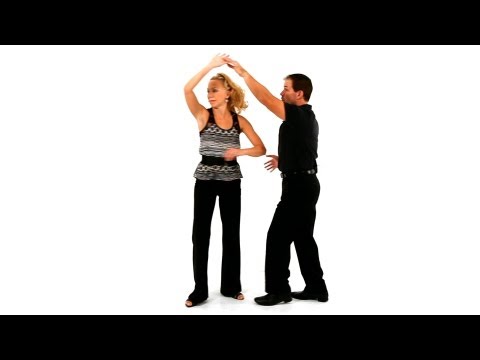 Don’t look down
Don’t look downIf you look down your weight balance will move and you’ll be more likely to fall. Look straight ahead for a steadier turn (or spot if you use that technique).
9. Don’t rush
So many people panic when they have to spin and try and go whooshing off really fast. But if you’re spinning or turning to music, you want to fill the beats you’re spinning on. If it’s a slow track, you’ll have longer to do one rotation. There’s no point whizzing round to find there’s still half the beat left to go.
10. Practice
It’s all about practice. Start with a single spin, and work up to multiple spins if you want. If you can do free spins yourself, it’s easier to then be led into aided multiple spins or turns. This clip shows the use of a clock method (admittedly for salsa spins with the prep, but the idea is the same for modern jive).
Tips for leaders
Most spinning is done by the follower, but these all apply to leaders as well.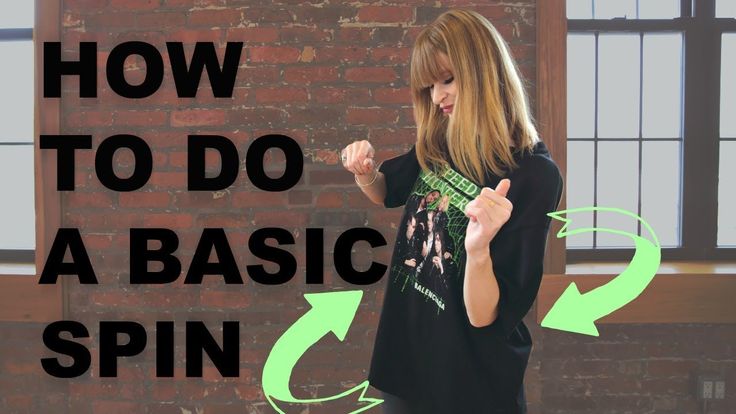 Plus if you’re prepping your partner for a spin, there’s things to be aware of.
Plus if you’re prepping your partner for a spin, there’s things to be aware of.
Don’t ever force the follower into a spin. You can prep for one (either raising the arm or prepping the follow for a free spin), but only they can do the spin.
Ensure your prep is accurate. If it’s a free spin, don’t prep the spin too far out from the follower’s centre, otherwise they will be off balance and the spin won’t work. If it’s an aided spin, raising your hand and the follower’s, to just above and in front of the follower’s head. Not really high above their head otherwise they’ll struggle to keep connection. And not below the top of their head otherwise they’ll have to duck which is a totally different move.
Own your spin
[bctt tweet=”The person spinning should always be the one in control of the spin ” username=”whatabout_dance”]
A final point to remember is that you don’t have to do multiple spins. Yes sometimes it’s nice to throw some in if the situation is right and the music calls for it. For example, I can do a double or triple (when I’ve been practising for a while), but I rarely do more than a single in freestyle. Because I’d rather have an immaculate single spin than try a multiple spin when the lead or prep doesn’t feel right, or the floor isn’t smooth enough. I’ve never had a leader moan that I’ve refused to do a double when he’s led that. I’ve usually had people compliment me on my spins.
For example, I can do a double or triple (when I’ve been practising for a while), but I rarely do more than a single in freestyle. Because I’d rather have an immaculate single spin than try a multiple spin when the lead or prep doesn’t feel right, or the floor isn’t smooth enough. I’ve never had a leader moan that I’ve refused to do a double when he’s led that. I’ve usually had people compliment me on my spins.
How do you get on with spinning? How were you taught?
Like this:
Like Loading...
Professional Tips to Improve your Pirouettes for Jazz and Ballet
Pirouettes are an essential element of not only ballet but other dance forms like jazz too. Most dancers will benefit from these simple tips to perfect their turning and pirouettes to present a more confident and graceful dance performance.
If you are a dancer, turns – especially –pirouettes are a must-have in your skill set. Pirouettes are among the most challenging yet most beautiful of dance steps.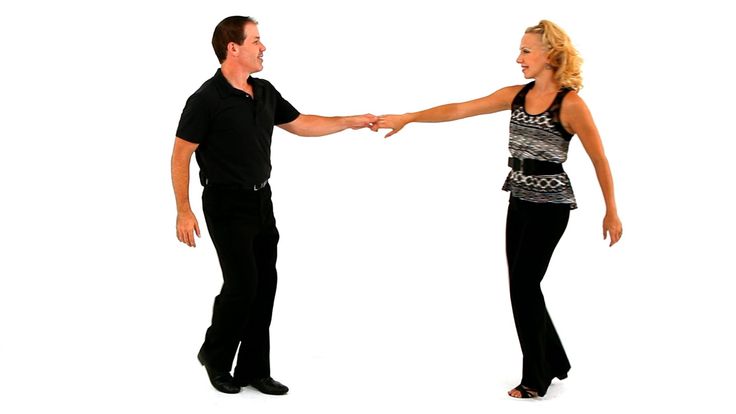 When a dancer tries to do a beautiful and controlled double pirouette from start to finish, it tells a lot about the alignment, spot, and timing. IT also tells you if the dancer has everything that is needed to do multiple pirouettes.
When a dancer tries to do a beautiful and controlled double pirouette from start to finish, it tells a lot about the alignment, spot, and timing. IT also tells you if the dancer has everything that is needed to do multiple pirouettes.
Pirouette is a turn, in a position, around an axis that you create with your body. To be able to continue around multiple times on your axis- similar to spinning a coin on a table, your body must stay aligned. If you lose your alignment, your body's position gets distorted, and you will lose balance, just like the coin wobbles when it fails its axis.
Pirouettes are also performed in other dance styles like Jazz or contemporary dance, where the raised knee is usually turned in.
In ballet, however, pirouettes form an integral part of the finishing routine, where they are performed in a series of two, three and even more to bring in the crescendo and finish with a flourish.
Whether you are a beginner or an intermediate dancer, looking to improve your turns, here are some tips to help you! We know you have a general understanding of how to do an "en dehors” pirouette in retiré. But these tips aren't just for en dehors and can be used for almost any form of pirouette!
But these tips aren't just for en dehors and can be used for almost any form of pirouette!
Think of Yourself as A Flat Coin -
Unless bent, a coin is flat, which allows it to turn around its axis while spinning on a table effortlessly. Stand in front of a mirror in retiré and try to turn 90* to the side, repeat the position and turn and look into the mirror. What do you see? If you are flat in both the positions, you are spinning like a coin, not like a wobbly soup can, nor a square block.
Stay Firmly in your Pirouette Position
Avoid having different positions of your body through the turn each time you spot. For cleaner pirouettes, once you establish your retire leg and begin, don't move. Don't fidget around, or lower your hip or change the position of the foot on your leg. Unless the move calls for the arms to go into another position, you should try to show the same position at every point in your pirouette. If someone took a continuous picture of you, the only thing that would change in each image would be your head spotting around.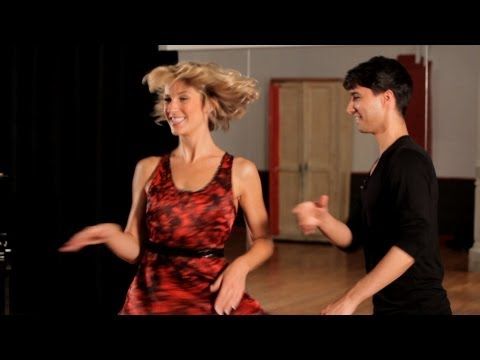
Get to your Turning Position in One Count-
For all types of pirouette, try to get to your retire position fast. The faster you get to the correct position, the less chance of momentum throwing you off balance as you're turning around. Try these Turnout Boards by American Dance Supply for improving your turning.
Forget that you have Arms
Pirouette is done with your body, not arms. The most common mistake is to focus more on your arms, and whip them around while you should be doing the exact opposite. If you throw your arms around, your torso becomes misaligned with your legs. Your whole body should be making the pirouette position, arms in pirouettes are used just because you can't keep them away, they are only for decoration! Focus on your standing leg, make sure it is straight, and your retiré' leg is properly attached nice and high.
For Easier Spotting, Focus on your Chin -
If you focus on keeping your chin level, you will be having a better-aligned head and neck- which will make your spotting smoother and pirouettes easier.
Your chin should be parallel with the floor. It will ensure that your head can turn around your neck more smoothly. If your chin is dipped too high or too low, it will throw you off your alignment and be challenging to balance and turn on your axis. You may be told to keep your head and neck better aligned, and for that, the best way is to keep your chin parallel to the floor.
Create an Axis -
Take a look into the mirror and focus on keeping your neck in-line with your spine. If you have to force your neck back, that means your posture is always out of alignment. For pirouettes, it is essential that you are aware of the line of your neck. See if, while turning, your neck sticks out forward, out of alignment with the spine. If that happens, you will not be able to spot correctly, and your turn will not be clean and effortless.
A helpful image is to think of a rod between the back of your head, into your neck, all the way down your back through your standing leg and into the floor.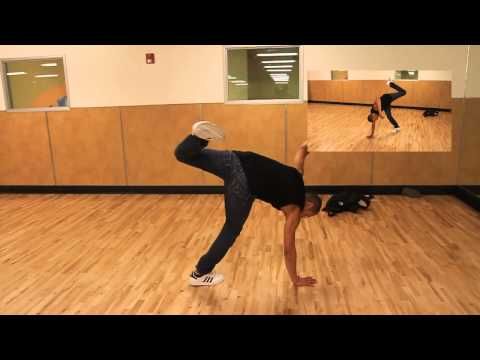 This is your axis, and that’s where everything should be. Engage your core to help maintain proper alignment (ribs, spine, pelvis, hips). Your core strength helps improve your technique and keeps your injuries at bay as well.
This is your axis, and that’s where everything should be. Engage your core to help maintain proper alignment (ribs, spine, pelvis, hips). Your core strength helps improve your technique and keeps your injuries at bay as well.
Strengthen your Ankles and Legs to get Stable Pirouettes
If your calves feel tired after relieving just a few seconds, that means you need to try some therapy band like these Loop Bands By American Dance Supply to improve the strength in your ankles and calves. Merely flex and point with this band around your foot, an excellent exercise for both your ankles and calves.
Focus on fully stretching your standing leg when you relevé. Use the Barre, try some fondue exercises while going into relevé, ensuring a fully straightened foot to get to your highest demi-pointe.
Loosen your Neck while Spotting-
Don't force your spot in pirouettes. Like any other step in ballet technique, where you are required to engage your muscles, make sure you don't tense them.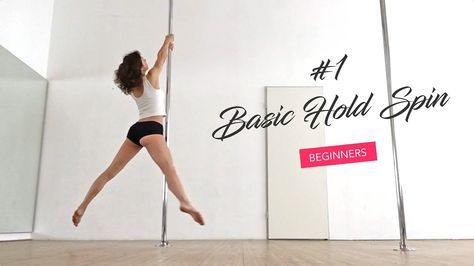 It works against you, causing you to lose your balance. If your neck muscles are tensed, you will end up thrashing your head around to make an active spot. If you wish to improve your pirouette, keep your neck loose, and allow your head to move around quickly and smoothly while you spot.
It works against you, causing you to lose your balance. If your neck muscles are tensed, you will end up thrashing your head around to make an active spot. If you wish to improve your pirouette, keep your neck loose, and allow your head to move around quickly and smoothly while you spot.
While Turning, Avoid Double Preparation
If you do a double preparation to get to the fourth position, then make another adjustment to get to next fourth position and then try to turn, your dancing will appear less fluid and confident. Any pirouette-only requires one preparation. Keeping only one preparation will add more clarity to your dancing and get you sooner on track to improving pirouettes.
Balance and Preparation- Two most Important Components of Pirouettes
Having balance and preparation in tandem for consistent pirouettes is important. While your preparation, try to be on balance- Maintain it as you plié for the preparation. It might seem obvious, but most dancers disconnect balance and preparation, assuming that balance only happens when they relevé and begin turning.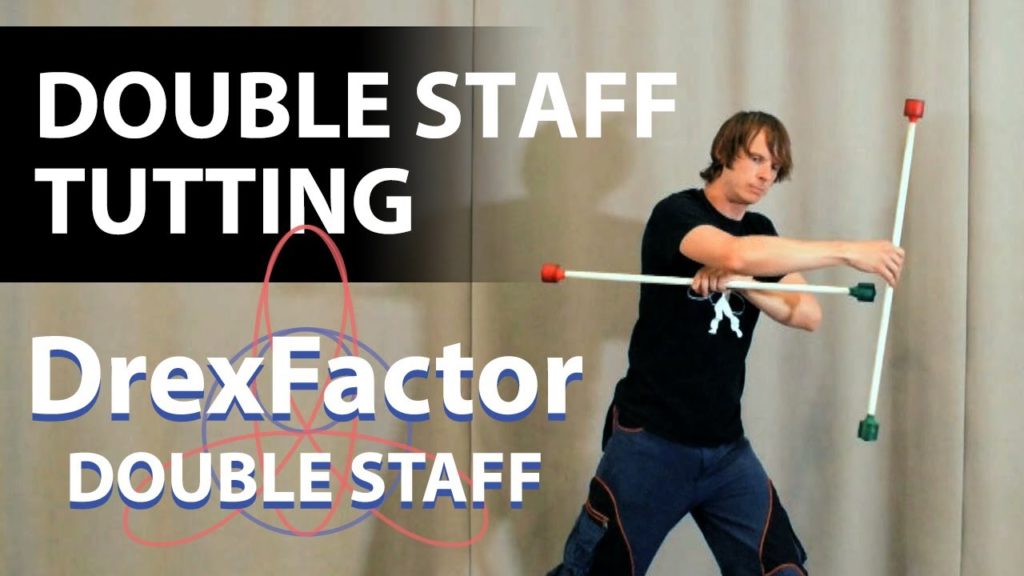 On1dancewear has just the right product- Pirouette Master Turning Board. Get into your preparation, stay on your leg, and hold it for 8 counts, try to feel that you are in a strong position and most importantly, on balance. Then, try doing a double pirouette.
On1dancewear has just the right product- Pirouette Master Turning Board. Get into your preparation, stay on your leg, and hold it for 8 counts, try to feel that you are in a strong position and most importantly, on balance. Then, try doing a double pirouette.
Don’t Practice on Off-Days
We all struggle on some days. The steps get right. Take heart; even professional dancers get caught up sometimes. Don't get stuck on doing a certain number of pirouettes at all times. If you are falling out of your triples, take a deep breath, and go back a little. Try a double; even a single will do. Don't keep practicing on your off-days and put pressure on yourself.
Sometimes, no matter how hard you try, things do not seem to change, and this can be extremely frustrating.
Remember that a fantastic pirouette has more to do with core stability than with your legs.
If you have watched a dancer doing beautifully clean, multiple pirouettes, you must have observed her superb alignment and position. I am not trying to overwhelm you with all these tips to improve your pirouettes. Read them all, but when it comes to applying, take one or two at a time until it becomes your second nature.
I am not trying to overwhelm you with all these tips to improve your pirouettes. Read them all, but when it comes to applying, take one or two at a time until it becomes your second nature.
Whether you are struggling with mastering pirouettes these tips, and very soon you will be on your way to doing singles, doubles, triples and even more!
Dance Spins - Technique Recommendations
Everyone involved in dancing (and especially in such styles as salsa, rumba, Argentine tango, etc.) will be interested to know some of the subtleties and secrets of dance steps. This is especially true for such a complex element as rotation. Let's talk about how to rotate the partner correctly so that she does not fall and fly away)). And the girls will be interested to know: how to keep up with the rotations and at the same time look great in the dance. Of course, we are not talking about single turns here, but about double, triple and more.
Spinning and spinning
As a rule, girls are very fond of showing off their ability to dance cool.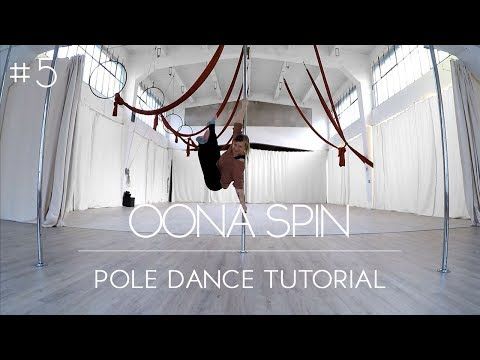 And if she's really good at spinning, you can be sure that your partner can't wait for you to spin her.
And if she's really good at spinning, you can be sure that your partner can't wait for you to spin her.
You can even say this: all the girls (regarding the rotations in the dance) are divided into 2 categories - those who can and love to spin, and those who love, but have not yet learned.
That is why, while dancing with a familiar partner, if you know that she easily makes a double turn, try spinning her a third time. Don't stop there.
However, do not overdo it with rotations. It is not recommended for beginners to rotate strongly, since falls very often lead to injuries. The number of turns is an indicator of the level of the couple, and the absence of falls is an indicator of the level of the partner.
Turning Technique and Leading (partner)
- Pay close attention to what is happening around you. This is especially true during the disco, where you can often meet a lot of tipsy personalities.
 If they crowd near your couple, it is better to move away.
If they crowd near your couple, it is better to move away. - Observe the lady's stability before, during and after the turn. If it starts to drift, then most likely the problem is in it. In this case, the number and intensity of turns should be reduced. However, if experienced partners lose stability while dancing with you, then most likely it is you. And most importantly, if the partner starts to fall, catch her, by all means!
- Be sure to consider the music tempo. There must be at least one or two scores for each turn.
- 70% of success depends on the preparation for the turn, and therefore this movement should be prepared with great care.
- Calculate in advance the number of turns performed by the partner. There is nothing worse than a partner who is not confident in himself and his plans.
- Be serious about completing the turn. When completing the movement, let your partner know that this turn is the last. Lower her hand in time so that the girl does not skid.
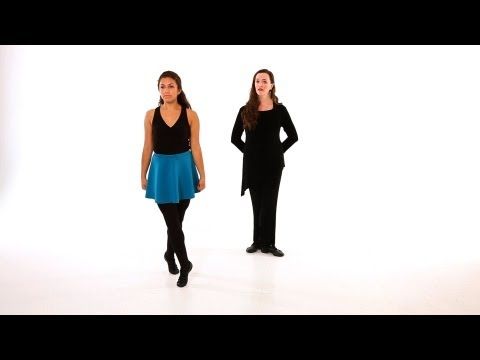
- Let your partner rest before performing the following movements. Do not immediately start entering the cycle of the next complex figures, as the girl may lose her balance. Let her catch her breath, do a basic or hug her without stopping the dance. Your partner will appreciate your care.
Rock and Roll ABC
Rock and Roll ABC Acrobatic rock and roll -
it's super fast paced,
spectacular spins,
dizzy
acrobatics and all this in dance.
Rock and Roll Memo
-
RATE AND DURATION OF NUMBER
REGULATED TEMP - 48-50 BPM
This means that in this minute such a number of kicks are performed (alternately throwing the legs forward, up) and acrobatic elements that even the most trained athlete will easily lose his breath. Rock-n-rollers, on the other hand, need not only to keep moving at a frantic pace, but also to ensure that the partner correctly performs the acrobatic element and landed successfully.
 The performance lasts one and a half minutes. This is for the audience, shocked by the beauty of the number, it seems that it flies by instantly, and for the athletes who perform acrobatic rock and roll, an eternity passes.
The performance lasts one and a half minutes. This is for the audience, shocked by the beauty of the number, it seems that it flies by instantly, and for the athletes who perform acrobatic rock and roll, an eternity passes. -
Difficulty
THE INTERNATIONAL RULES FOR ADULTS IN THE MAIN CLASS PROVIDE TWO DIFFICULTY CATEGORIES: FREE STYLE AND CONTACT STYLE.
CONTACT STYLE
Performing acrobatic elements is only allowed in contact with a partner. Flying is possible only as a way to approach the element.
FREE STYLE
The performance of the most exciting elements of flight acrobatics is provided. The highest level of difficulty.
-
EASE OF MOVEMENT
THE JUDGING OF ACROBATIC ROCK AND ROLL HAS A CRITERION THAT DIFFERS IT FROM OTHER SPORTS. IN THE RULES IT IS RECORDED AS "HEART ATTACK"
In the understanding of the judges, it sounds something like this: “so that the heart is calm” and means the ease of performing any element.
 That is, the judge, who is present at the competition, should not experience any fear, looking at the acrobatic element performed by the couple. This means that each element must be worked out to absolute automatism in order to dance on the floor with serene confidence and ease.
That is, the judge, who is present at the competition, should not experience any fear, looking at the acrobatic element performed by the couple. This means that each element must be worked out to absolute automatism in order to dance on the floor with serene confidence and ease. -
AGE GROUPS
ATHLETES IN ACROBATIC ROCK AND ROLL ARE DIVIDED INTO FOUR PAIR AGE GROUPS:
MEN AND WOMEN
JUNIORS AND JUNIORS
BOYS AND GIRLS
BOYS AND GIRLS
AND THREE FORMATION AGE GROUPS
WOMEN
GIRLS
GIRLS
Competitions
-
COMPETITIONS DIVISION BY
PAIR AND GROUP.
IN DOUBLES
COUPLES PARTICIPATE,
IN GROUP - COMMANDS
FORMATION-MIXT and FORMATIONCOMPETITIONS AMONG THE AGE GROUP OF MEN AND WOMEN ARE HELD IN TWO PROGRAMS: "LEG TECHNIQUE" AND "ACROBATICS"
COMPETITIONS AMONG PAIRS OF AGE GROUPS JUNIORS AND JUNIORS, YOUTH AND GIRLS, BOYS AND GIRLS ARE CARRIED OUT ON THE SAME DANCE OR ACROBATIC PROGRAM.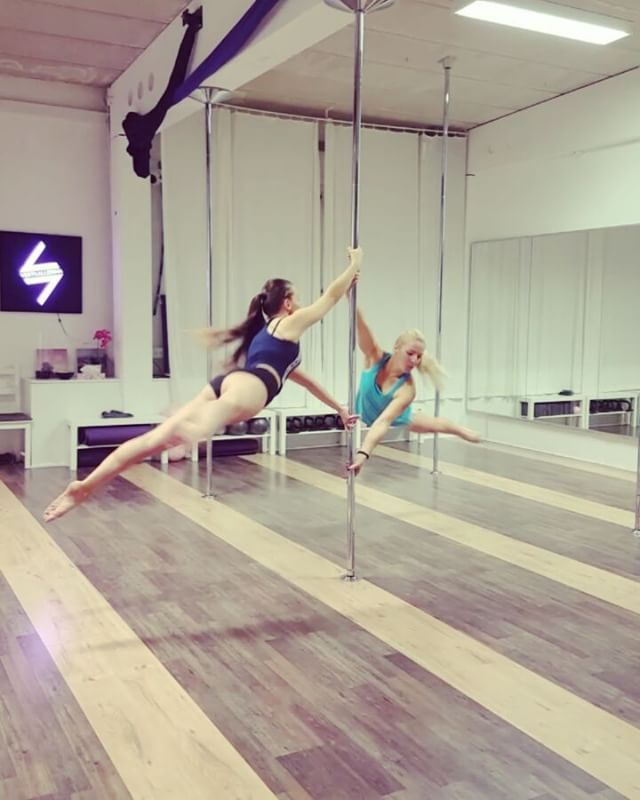
- Where to go to practice?
Where to start?
-
Basic step
basic step
A dance step in which all the figures and movements of acrobatic rock and roll are performed. The main move is divided into a hobby move and a competitive move. Hobby move. Only used for teaching, this is stepping rock and roll, no jumping. Competitive move (or jump). Used in competitions, it includes alternating jumps and kicks.
-
Hop
hop
Competition chants to keep pace. Corresponds to the rolls of the main move.
-
Bettarini
bettarini
Element entry. Used exclusively by Main class athletes. If in fuse the partner comes facing the partner, putting one foot on the partner’s hands, and the other pushes off the floor, then in bettarini the partner stands with her back to the partner. He throws her on her back, grabs her feet with his hands, creates a platform for pushing and throws her partner up.
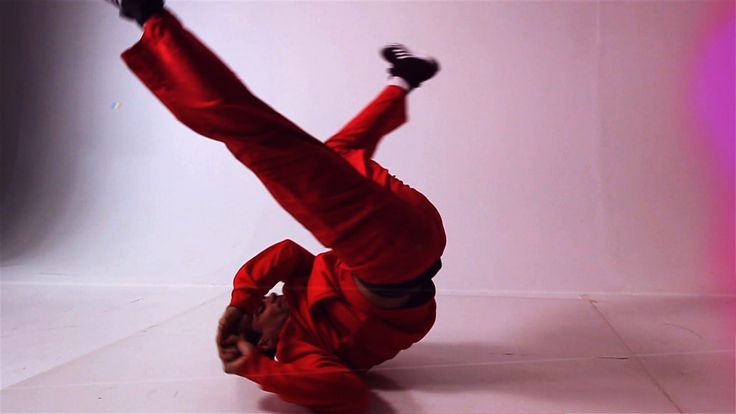 This approach to the element was invented by the Italian athlete Marco Bettarini. Now he is a judge and always watches with interest the technique of performing his offspring.
This approach to the element was invented by the Italian athlete Marco Bettarini. Now he is a judge and always watches with interest the technique of performing his offspring. -
Fus
staff
Entering the acrobatic element, in which the lady rests her foot on the palm of the partner standing with legs bent at the knees. For example, with fusa, you can do a back somersault. The height of the acrobatic element, landing, and ease of execution depend on the correct setting of the fus.
-
Dulain
dulain
Acrobatic element in which a double rotation takes place in the same plane. The partner rotates on her own axis, at the same time the partner rotates her around his shoulders.
-
Footwork
Footwork
Part of the pair competition program. It is performed without acrobatic elements at a pace of 50-52 beats per minute. The judges evaluate the technique of performing the main move, dance figures, rotations, composition.


